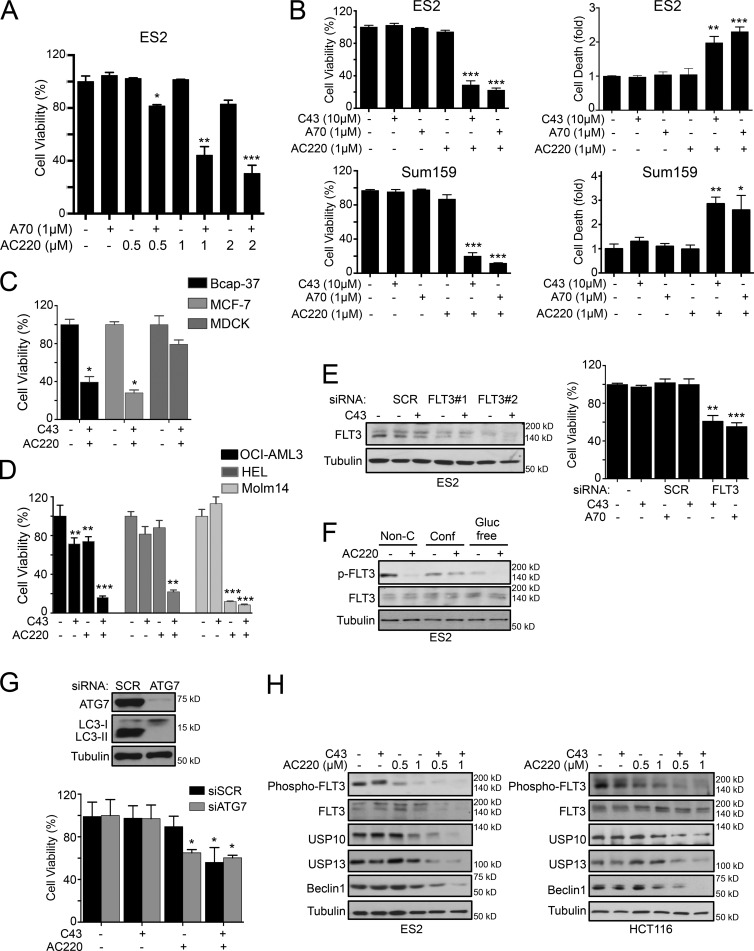Figure 1.
FLT3 inhibition sensitized nonconfluent cancer cells to spautins. (A) Cell viability (%) of ES2 cells treated with increasing concentrations of AC220 and/or A70 for 24 h. (B) Cell viability (%) and cell death (fold) of ES2 and Sum159 cells treated with AC220 and/or C43 or A70 for 24 h. (C and D) Cell viability (%) of Bcap-37, MCF-7, and MDCK cells (C) and of OCI-AML3, HEL, and Molm-14 cells (D), treated with AC220 and C43 for 24 h. (E) Cell viability (%) of scramble (SCR) or FLT3 siRNA–transfected ES2 cells treated with C43 for 24 h. WB confirmed the FLT3 siRNA efficiency. (F) Phospho- and total FLT3 protein levels of ES2 cells cultured in confluent (Conf), nonconfluent (Non-C), or glucose-free (Gluc free) conditions, treated with AC220 for 24 h. (G) Cell viability (%) of scramble (SCR) or ATG7 siRNA–transfected ES2 cells treated with AC220 or C43 for 24 h. (H) WB of indicated proteins in ES2 and HCT116 cells treated with increasing concentrations of AC220 and/or C43 for 24 h. Anti–α-tubulin was used as a loading control. Cells were treated with 0.1% DMSO (control: vehicle) or 1 µM AC220 and 10 µM C43, unless otherwise stated. In all the experiments, treatment groups were compared with control group, unless otherwise indicated. Error bars indicate ±SD. *, P < 0.05; **, P < 0.01; ***, P < 0.001.

